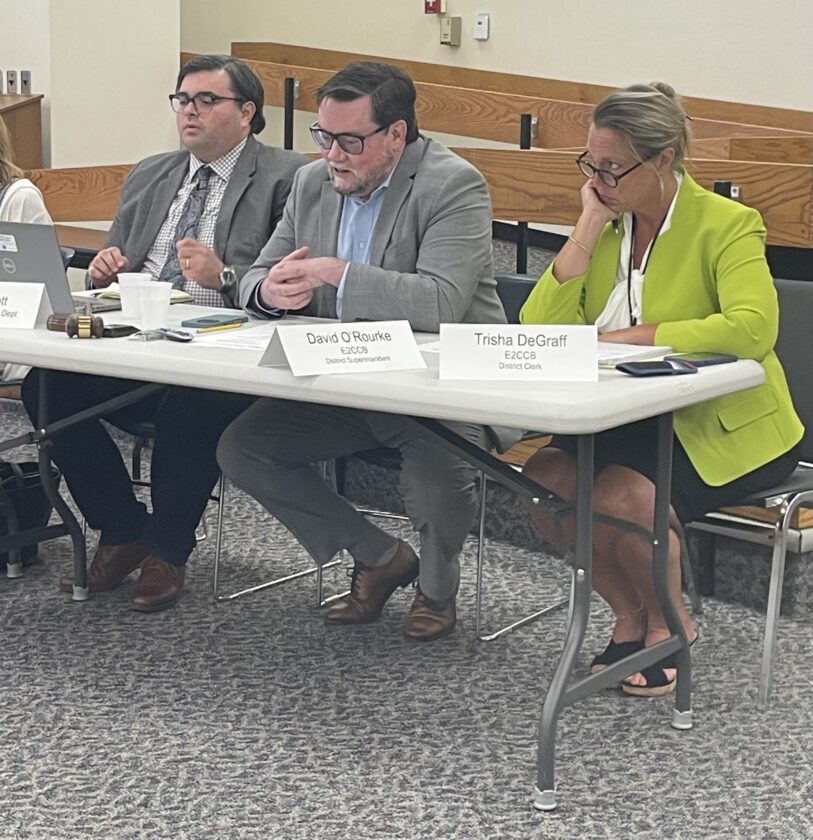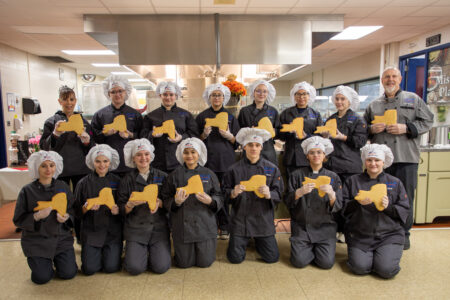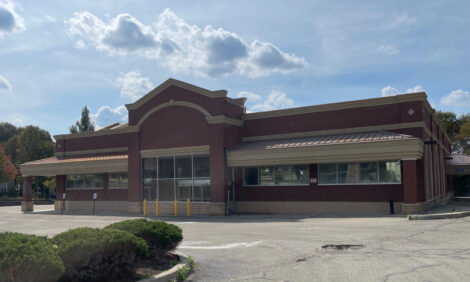Lengthy Process
BOCES Leader: Joint Meeting Was Important First Step

Pictured is District Superintendent David O’Rourke in between David Elliot from the NYS Education Department and Trisha DeGraff, BOCES District Clerk, during the joint CSP meeting Wednesday night.
ASHVILLE – David O’Rourke, BOCES superintendent, knows declining enrollment is a major issue for many of the school districts in the region.
Now, he finds himself part of the lengthy process for Clymer, Sherman and Panama to possible deal with the districts’ declining enrollment through a potential merger.
Following an exit poll question asking about moving forward with a feasibility study for a potential merger that was featured with the annual school budget vote back in May, the Clymer, Sherman and Panama school districts held a joint board meeting on Wednesday night. This meeting, District Superintendent David O’Rourke said, is the next step in the process of moving forward with the feasibility study that was approved in a vote by the three communities.
“In general, small rural schools face declining enrollment as a significant challenge — both in terms of program for students as well as for operational efficiency,” O’Rourke said. “These three boards posed a question to voters at their budget votes in May, asking if the participants favored a study of reorganization of the schools — often referred to as a ‘merger study.’ The majority of respondents in each district favored conducting the study. This joint meeting is to provide an opportunity to get all three boards the same information about what a reorganization study entails.”
O’Rourke said some important factors when considering school district boundaries, he said, are the ability to support student needs and having a sufficient tax base. O’Rourke said some reasons why districts consider reorganization is student population, the tax base, more resources and the ability to apply for larger state aid amounts, as well as more sustainability and additional programing and support services in the future. There is also a separate incentive for state building aid, allowing for the improvement of the building and grounds or construction of new buildings and grounds to meet the needs of the newly organized school system.
The total amount of state aid for reorganization when Clymer and Panama previously pursued a merger study, based on a time period of 14 years, was around $16.4 million. With the new revision of the law that recently occurred to reflect the current times, state incentive aid today for the potential merger between the three districts, also over 14 years, amounts to $68.8 million.
The meeting of the three boards included a presentation about reorganizing or merging schools, including information about the merger incentive aid offered to schools that undertake a merger, along with things the reorganization study will need to include. Last year’s School Aid bill allowed for incentive aid for school mergers to be updated to reflect current aid scenarios for districts, leading to a significant increase in aid in the formula. This incentive aid has increased significantly since the original attempt at merging between Clymer and Panama.
As District Superintendent of BOCES, O’Rourke said he represents the New York State Education Department commissioner in the local region, and his role is to provide this information to the three boards as well as to answer any of the questions from them or the public.
The main purpose of Wednesday’s meeting, O’Rourke added, was to provide the boards with up to date information on reorganizing schools in the state, and learn about the requirements for a feasibility study to occur. At the end of the meeting the boards voted and agreed to move forward with undertaking a Request for Proposals for conducting the study. Now that moves forward, after the proposals are reviewed, O’Rourke said the next step for the boards will be to consider whether they wish to award a proposal to a consultant group to do the study.
“This is an early but important step – and the meeting will provide an overview of the merger process to the boards,” O’Rourke said. “A number of the board members have experienced previous merger studies and referendums in their districts.”





